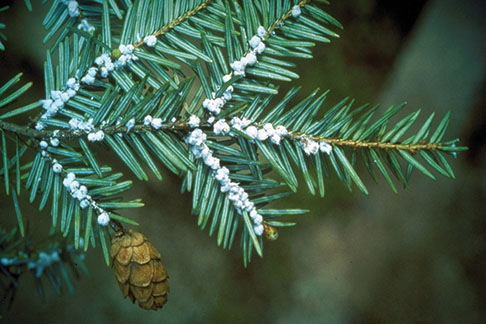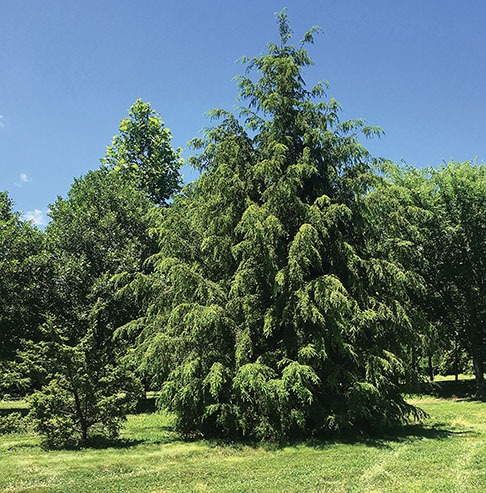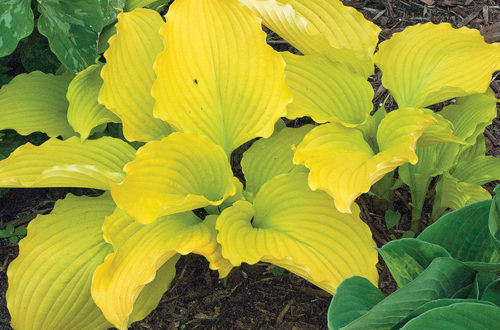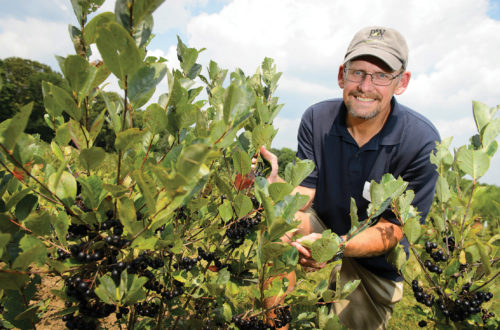By Kim Kaplan
A first-of-its-kind hybrid hemlock, which is not vulnerable to the insect hemlock woolly adelgid, has been developed by the Agricultural Research Service’s (ARS) U.S. National Arboretum.
Traveler, as the new variety is named, is a cross between the Chinese hemlock (Tsuga chinensis) and the native Carolina hemlock (Tsuga caroliniana). The new tree has the native hemlock’s handsome symmetrical evergreen growth habit with slightly weeping branches. It has a moderately slow growth rate and produces large cones.
But its most important characteristic is the ability to survive attack from the hemlock woolly adelgid.
“We’ve had trials of Traveler growing since 2000, and we haven’t seen any damage from the insects despite the trees being planted out among susceptible Carolina and eastern hemlocks,” said ARS horticulturist Susan Bentz. Bentz is with the U.S. National Arboretum’s Floral and Nursery Plants Research Unit in Beltsville, Md.
Sap-sucking hemlock woolly adelgids are closely related to the aphid. Originally from Asia, the hemlock woolly adelgid arrived in the United States in 1951 and has since spread to 17 states from Georgia to New England and southwestern Nova Scotia, decimating stands of both Carolina and eastern hemlocks.
The insect has virtually eliminated hemlocks as a marketable ornamental tree in the eastern U.S.
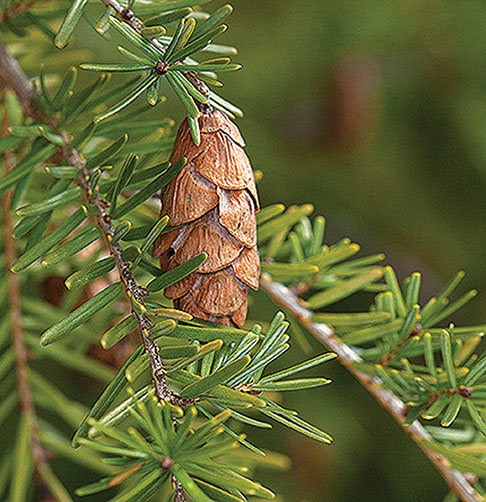
Hemlock ‘Traveler’ is an attractive cross of the Carolina hemlock (Tsuga caroliniana) and the Chinese hemlock (Tsuga chinensis) that is resistant to the hemlock woolly adelgid. It has a moderately slow growth rate and large cones.
One reason for the insect’s power to wipe out large stands of hemlocks is its ability to reproduce parthenogenetically, or without their eggs being fertilized. This means female hemlock woolly adelgids can reproduce without males, resulting in substantial annual population increases and decimation of large stands of hemlocks.
The Carolina hemlock’s native range is basically parts of the Appalachian Mountains in Georgia, South Carolina, North Carolina, Tennessee and Virginia.
More widespread, the eastern hemlock (Tsuga canadensis) is found throughout New England, mid-Atlantic states and the Lake States and south into the Appalachian Mountains in northern Georgia and Alabama and west from the mountains into Indiana, western Ohio and western Kentucky.
While developing these hybrids, Bentz and colleagues found that the eastern hemlock would not cross with the Chinese hemlock, while crosses between the Carolina and Chinese hemlock produced several offspring that were verified using molecular techniques.
After promising replicated field and greenhouse trials in Beltsville, Md., the researchers moved on to field trials of Traveler and other similar crosses in North Carolina and Connecticut.
“After 6 years in the North Carolina trial, the average height of Traveler trees planted was 3.5 meters (11.5 feet) and all have survived,” Bentz said. “It will make a very attractive specimen tree in a large yard, park, commercial site or as an informal large screen.”
Hemlocks play important roles in forest ecosystems as well as in cultivated landscapes, serving as a foundational species that impacts hydrologic cycles, wildlife, and biodiversity. However, because Traveler is relatively slow growing and must be reproduced asexually from cuttings, it will likely not be economically feasible to use Traveler routinely in forest renovation.
A plant patent has been applied for Traveler, and ARS is looking for commercial propagation partners to help bring this new plant to the nursery trade.
Kim Kaplan is a Public Affairs Specialist at USDA ARS in Beltsville, Md. The Agricultural Research Service is the U.S. Department of Agriculture’s chief scientific in-house research agency.
